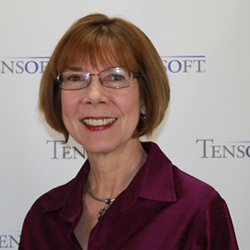 In today’s increasingly complex financial and regulatory environment, it can be challenging to stay current on the latest accounting guidance, and particularly on updates for the new standards for revenue recognition. To get a sense of how accounting and finance professionals are doing that today, I queried members of a popular online forum, Proformative, about how they manage this. Here’s a sampling of the responses:
In today’s increasingly complex financial and regulatory environment, it can be challenging to stay current on the latest accounting guidance, and particularly on updates for the new standards for revenue recognition. To get a sense of how accounting and finance professionals are doing that today, I queried members of a popular online forum, Proformative, about how they manage this. Here’s a sampling of the responses:
“1) I delegate (maybe the lazy person’s way out). I read/browse newsletters from some CPA firms where I’m on their list. I read/browse some LinkedIn Groups from time to time. And lastly, when there is an issue, I go and read the actual GAAP ruling myself.
2) I subscribe to all releases from the FASB and IASB, PwC’s CFO Direct, Deloitte’s IASPlus, and use several services. I also subscribe to notices from several other large public accounting firms. One of my job tasks is publication of a quarterly update regarding accounting and financial reporting, audit standards and practices, and internal controls/risk management developments.
3) I have found the easiest and least expensive way is to sign up for with accounting firms such as BDO, EY and Deloitte who offer regular web based update programs. Joining is free, they are generally over lunch and free. The quality is very good and focused.”
Another member of the same forum posted a similar request, but asking for specific guidance on SaaS revenue recognition guidance. Most of the advice that followed is summarized pretty well in this one reply:
“1. ASC 605-25 guidance on multiple element arrangements (also known by its old names of EITF 08-1 and ASU 2009-13). I would actually start with one of the Big 4 firm’s guides that are available online – for example, Deloitte has an excellent Roadmap series (go to their website, search for “roadmap” and you should get a list of the available titles including one on multiple element arrangements).
2. ASC 985-605, if any of the elements are software – most true SaaS arrangements are services, not software, but there are many different arrangements out there and sometimes “SaaS” contracts may allow customers to take possession of the software. Again, Deloitte and others have excellent roadmaps that can help you navigate through the applicable accounting guidance.
3. SEC SAB Topic 13 (Revenue Recognition) provides useful guidance and examples in applying GAAP revenue recognition principles – for example, it covers the treatment of nonrefundable upfront fees such as the setup fees that are common in SaaS arrangements. The SEC guidance is available at www.sec.gov if you don’t have access through other accounting research services.”
In addition to these helpful sources, several posters mentioned that it can be instructive to read through 10-Ks of publicly traded companies in your industry to get a sense of some of the issues.
Obviously, this is an area of keen interest to many of Tensoft’s customers, so we provide regular webcasts – both free and paid – on topics in this area. These are open to anyone to attend, and – because we’re a NASBA certified CPE provider – attendees are eligible to earn CPE credits for attending.
If you’re interested in attending a live training course (both live in-person and a webcast) for CPE credit, we’ll be offering a two day course called “Software Revenue Recognition” on Tuesday, November 15 and Thursday, November 17. For more information, or to register, click here or go to our home page. (If that date has passed, you can still view similar webcasts – as well as many other recorded sessions from the past – in Tensoft’s Resource Center.)
For more information about Tensoft’s products and services, please contact us. If you’d like to comment on this article, I encourage you to Tweet, post to Facebook or blog about it!